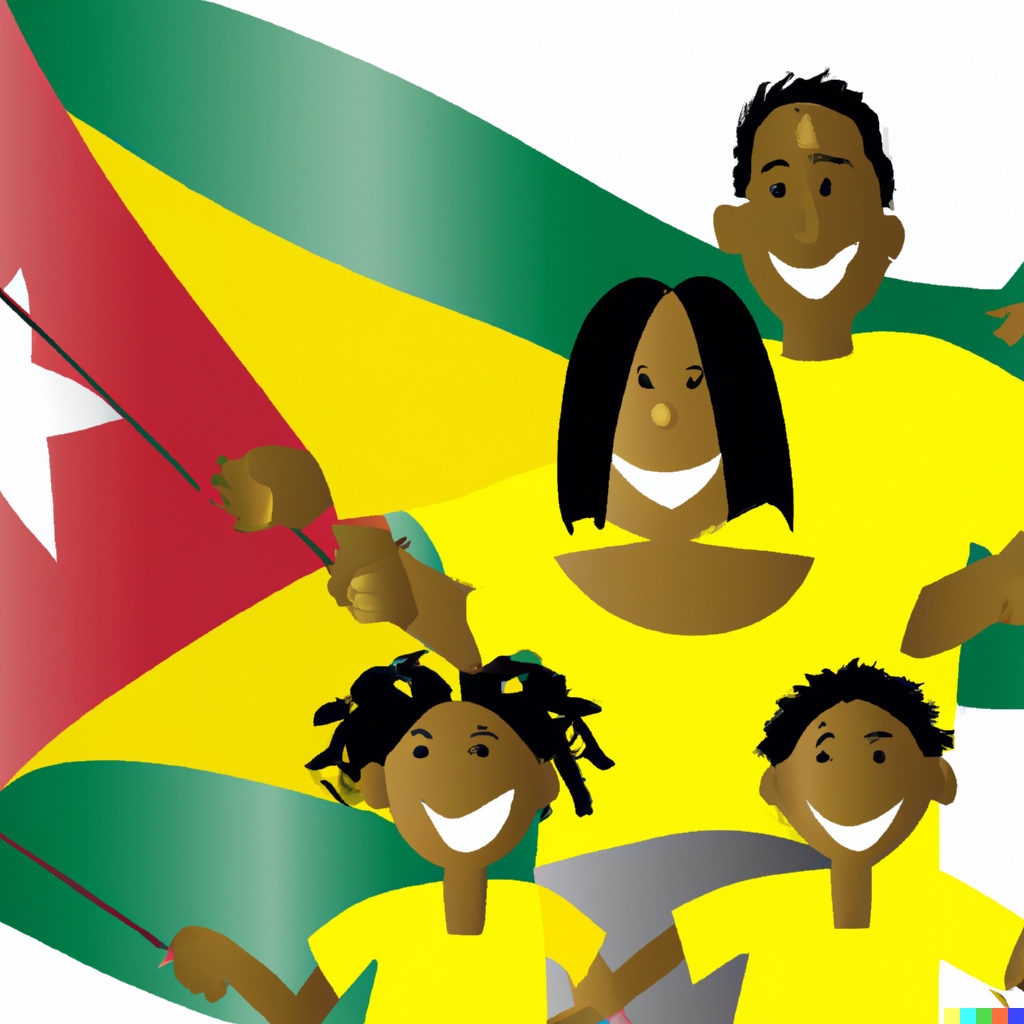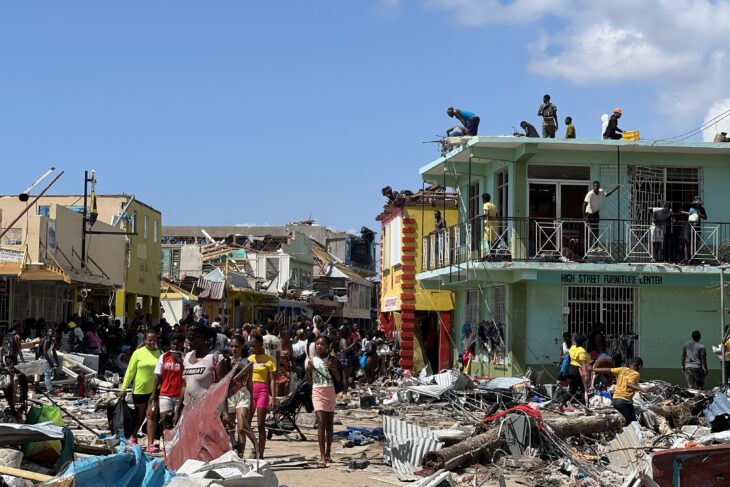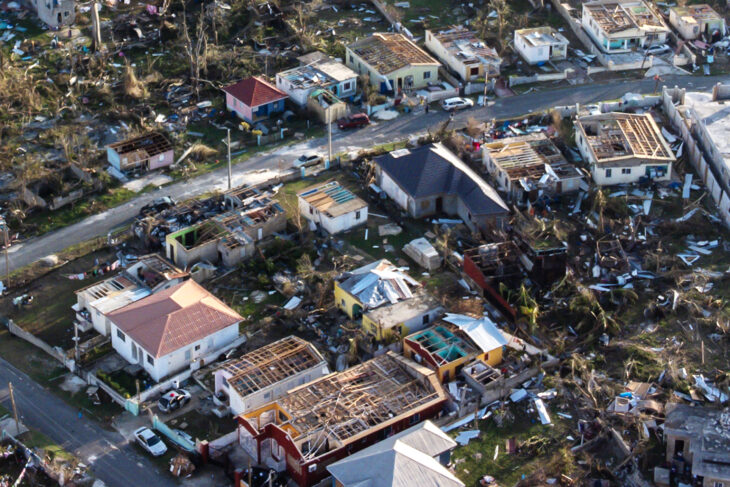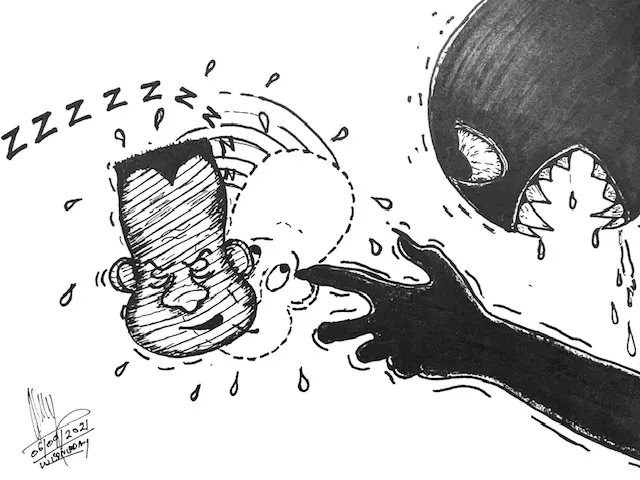
Would you believe I now know more relatives from my father’s side in Cuba than in Jamaica, although that side of my family was born right here!
Maydolys, (Back) Hector Ian Casrlos (Front)
A few years ago I visited Cuba. It was great to finally meet members of my family and learn something about my paternal grandfather who died when I was quite young and of whom, I recall, I was very scared.
I was scared of him as he was blind so always wore dark glasses and he had a big beard. I think I only saw him twice but what puzzles me now is that I can’t recall anyone ever telling me anything about him or his family!
The only thing I knew was that he was the principal of a primary school, became blind in his 40s and died in his early 80’s. It is only through my cousin Barry who lives in Canada but who had grown up with us and who later found another cousin there named Sheila who brought him up speed on the relatives of my paternal grandfather, that I too am getting some information about that side of the family.
Barry heard about the relatives in Cuba and some years ago attended a small gathering to celebrate the 105th birthday of our grand aunt there. He sent me the email address of her daughter called Bebita . We started to communicate and that is how I ended up going there this time to meet the wonderful family who I had known nothing about on my previous three trips to Cuba.
I now know that my grandfather actually had eleven siblings most of
whom migrated. Bebita speaks English and is in touch with relatives in Jamaica, Canada, England and the USA and she has a wealth of information.
However her children, grandchildren and great grand children speak only Spanish and do not appear to be too interested in communicating with far flung relatives so I don’t know how long the connections will remain, but it was really great linking up with them.
Bebita’s mother migrated to Cuba around 1919 when the Cuban economy was blooming and many Caribbean migrants went there in search of good jobs. (On my latest visit there, I met quite a few descendants of Jamaicans, Grenadians and St. Lucians).
Bebita was born there and while another aunt who had gone there with her mom moved on to the USA, her mom stayed there forever and raised a Cuban family.
Most live in Cayo Mambi in the municipality of Frank Pais which is in Holguin province, some 160 kms from Holguin city.
Her town is a pleasant, rural farming area with wide tree lined streets and high rise buildings built by the government to house the people.
Bebita had been a teacher in her youth, teaching adults English after the revolution.
In the 1962, hurricane Flora destroyed her home and she was given a two bedroom ground floor apartment in a government house.
The main source of employment used to be at the Frank Pais sugar factory, but after it was destroyed by one of the many hurricanes that constantly devastate us in the Caribbean, it was closed and many people were left unemployed.
As a result of the liberalization that took place under Raul Castro, many person set up small businesses in their homes and operate farms. In Cuba today, you can now keep, use and sell farm products and small animals and you can dispose of everything as you wish, except cows which have to be sold to the state.
Cayo Mambi is a very pleasant rural town but it is the first place I have even seen an outdoor gym with exercise equipment for the residents to use.
To travel over to Cayo Mambi from Holguin town, we chartered an old Russian made Lada which looked a bit decrepit and had a noisy engine but it drove well. We had planned to hop on a bus to return, but learnt that the buses were reserved for the residents as the fares are subsidized so we came home in a brand new chartered, air conditioned Chinese car. It did not appear to be as good as the old Lada however as we noticed that the engine kept fading so the driver was constantly turning the key back on, but it never stopped and we got back comfortably and safely.
Flowers were laid in front of the monument dedicated to Frank Pais
I was very curious about Frank Pais as not only is the airport at Holguin and an entire municipality named after him but also the sugar factory in Cayo Mambi and the house where he was born in Santiago de Cuba is highlighted as a place of interest.
On looking him up on my return, I learnt from WIKIPEDIA that; “Frank País (December 7, 1934 – July 30, 1957) was a Cuban revolutionary who campaigned for the overthrow of General Fulgencio Batista‘s government in Cuba. País was the urban coordinator of the 26th of July Movement, and was a key organizer within the urban underground movement, collaborating with Fidel Castro‘s guerrilla forces which were conducting activities in the Sierra Maestra mountains. País was killed in the streets of Santiago de Cuba by the Santiago police on July 30, 1957.



